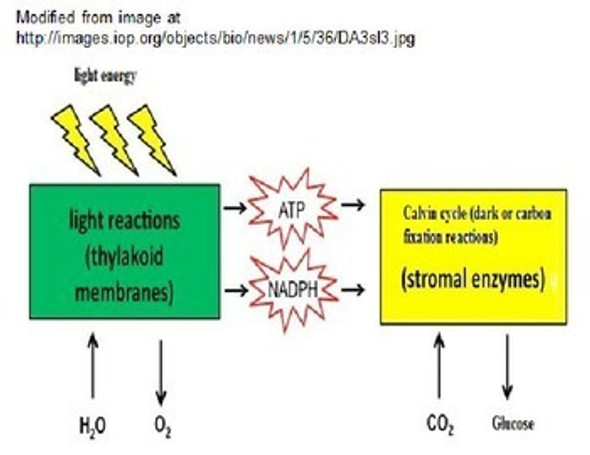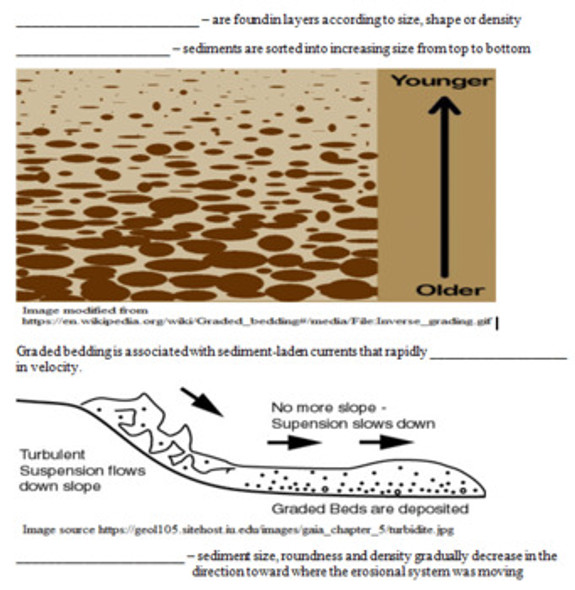Description
With the exception of the PowerPoint all documents are available in word (which easily edits to meet your needs) and pdf formats. Answer keys are included for all items. The bundle contains the PowerPoint and 97 pages of learning materials. Answer keys are not included in the page count. The specific contents of the bundle are listed below:
- Waves Scaffolded Completion Notes (31 pp.)
- PowerPoint to accompany the Scaffolded Completion Notes (94 slides)
- NASA Tour of the Electromagnetic Spectrum Video Worksheet Set (8 worksheets) (15 pp.)
- Introduction to Transverse and Longitudinal Waves Worksheet (30 completion and 40 multiple choice questions) (9 pp.)
- Interference, Diffraction and Doppler Effect Worksheet (39 questions) (9 pp.)
- Refraction and Snell's Law Worksheet (30 questions) (7 pp.)
- pHet Wave Simulation Lab Activity (14 pp.)
- Waves Exam (33 questions) (6 pp.)
- Using a Slinky to Study Waves Lab (6 pp.)
- Learning Objectives (including NGSS and Common Core) (4 pp.)
Topics addressed in this learning bundle include but are not limited to; characteristics of waves, transverse and longitudinal waves, properties of different electromagnetic waves,
diffraction, reflection and refraction, Doppler effect, Snell's Law, optical density, critical angle, total internal reflection, wave behavior/interactions and technology as well as many others.
The contents of this bundle are well suited for use in a traditional classroom. They may also be easily utilized to support remote learning situations.
NGSS Learning Standards
Students who demonstrate understanding can:
HS-PS4-1. Use mathematical representations to support a claim regarding relationships among the frequency, wavelength, and speed of waves traveling in various media.
HS-PS4-2. Evaluate questions about the advantages of using a digital transmission and storage of information.
HS-PS4-3. Evaluate the claims, evidence, and reasoning behind the idea that electromagnetic radiation can be described either by a wave model or a particle model, and that for some situations one model is more useful than the other.
HS-PS4-4. Evaluate the validity and reliability of claims in published materials of the effects that different frequencies of electromagnetic radiation have when absorbed by matter.
HS-PS4-5. Communicate technical information about how some technological devices use the principles of wave behavior and wave interactions with matter to transmit and capture information and energy.
Common Core State Standards Connections:
ELA/Literacy
RST.11-12.1 Cite specific textual evidence to support analysis of science and technical texts, attending to important distinctions the author makes and to any gaps or inconsistencies in the account.
RST.11-12.7 Integrate and evaluate multiple sources of information presented in diverse formats and media (e.g., quantitative data, video, multimedia) in order to address a question or solve a problem.
RST.11-12.8 Evaluate the hypotheses, data, analysis, and conclusions in a science or technical text, verifying the data when possible and corroborating or challenging conclusions with other sources of information.
WHST.9-12.2 Write informative/explanatory texts, including the narration of historical events, scientific procedures/ experiments, or technical processes.
WHST.11-12.8 Gather relevant information from multiple authoritative print and digital sources, using advanced searches effectively; assess the strengths and limitations of each source in terms of the specific task, purpose, and audience; integrate information into the text selectively to maintain the flow of ideas, avoiding plagiarism and overreliance on any one source and following a standard format for citation.
Mathematics
MP.2 Reason abstractly and quantitatively.
MP.4 Model with mathematics.
HSA-SSE.A.1 Interpret expressions that represent a quantity in terms of its context. HSA-
SSE.B.3 Choose and produce an equivalent form of an expression to reveal and explain properties of the quantity represented by the expression.
HSA.CED.A.4 Rearrange formulas to highlight a quantity of interest, using the same reasoning as in solving equations.
Learning Objectives
Upon the completion of this unit the student will be able to:
1. describe what is meant by a wave.
2. define the term medium.
3. briefly explain how waves transmit energy but not mass.
4. recognize electromagnetic waves can transmit energy in a vacuum.
5. explain what is meant by a vacuum.
6. recognize that mechanical waves can't travel in a vacuum.
7. list three examples of mechanical waves.
8. explain what is meant by a wave pulse.
9. recognize the speed of a pulse depends upon the type and properties of a medium it passes through.
10. define the term interface.
11. describe the following wave interactions with other media; refraction, diffraction, reflection, absorption, and transmission.
12. recognize dispersion is a specialized case of dispersion.
13. define the term periodic wave.
14. describe the motion of a longitudinal wave.
15. list several examples of longitudinal waves.
16. explain the difference between rarefactions and compressions in a longitudinal wave.
17. describe the motion of a transverse wave.
18. list several examples of a transverse wave.
19. explain the difference between cycle and frequency in a periodic wave.
20. recognize the hertz is a derived unit of frequency equal to a cycle per second.
21. define the term period.
22. recognize the frequency of a sound determines its pitch.
23. recognize the frequency of a visible light wave determines its color.
24. calculate the period of a wave if given its frequency.
25. define and identify on a diagram the following terms associated with a sine wave; amplitude, crest, trough and wavelength.
26. relate the amplitude of the wave to the displacement of its crest and trough.
27. relate the amplitude of a longitudinal wave to the spacing of its particles in compressions and rarefactions.
28. recognize the amplitude of a wave is directly proportional to the energy it transmits.
29. recognize the greater the amplitude of a sound wave, the louder the sound.
30. recognize the greater the amplitude of a light wave, the brighter the light is.
31. describe in-phase and out-of-phase waves by identifying them in a diagram and mathematically.
32. discuss how wave produce constructive and destructive interference.
33. explain what is meant by a wavefront.
34. recognize that each point on a wavefront is in the same phase.
35. utilize the formula v = f λ in calculations.
36. state the speed on an electromagnetic wave in a vacuum or air.
37. recognize the frequency of a wave is inversely proportional to its wavelength.
38. describe what is meant by the Doppler effect.
39. explain how the Doppler effect influences the pitch of a sound or color of light seen by an observer.
40. recognize the red shift supports the idea of an expanding universe.
41. define the term superposition.
42. recognize the resulting displacement of a wave formed by the superposition of two or more waves is the algebraic sum of these waves.
43. identify the node and antinode on interacting waves.
44. explain what a standing wave is and explain how it is formed.
45. define the term resonance and explain how it occurs.
46. describe the wave patterns formed in single slit and double slit diffraction investigations.
47. recognize the larger the slit a wave passes through, the smaller its diffraction effect.
48. briefly describe Thomas Young's double slit diffraction experiment.
49. use the equation λ/d = x/L in calculations involving double slit experiments.
50. explain how increasing the distance between the slits changes the distance between the maxima in the diffraction pattern formed.
51. describe the relationship between light wavelength and distance between the maxima in a double slit diffraction investigation.
52. describe how changing the distance from the slits to the screen changes the distance between the maxima.
53. define the term natural frequency.
54. explain what is meant by resonance.
55. recognize that light exists as a wave-particle duality.
56. recognize that visible light occupies only a small portion of the electromagnetic spectrum.
57. explain why rays are used to visualize the direction light travels.
58. explain the difference between incident rays, reflected rays and refracted rays.
59. define and label the following terms in a ray diagram; normal, angle of incidence, angle of reflection and angle of refraction.
60. state the law of reflection.
61. recognize light travels more slowly in media with greater optical densities.
62. define the term optical density.
63. recognize that a light wave traveling into a medium of greater optical density will not change in frequency, will be bent toward the normal and will decrease in speed and wavelength.
64. recognize that a light wave traveling into a medium of lesser optical density will not change in frequency, will be bent away from the normal and will increase in speed and wavelength.
65. define the term absolute index of refraction.
66. utilize the equation n=c/v and its derivatives in calculations.
67. utilize Snell's Law in computations involving light waves traveling through different media.
68. define the term critical angle.
69. utilize the equation sin C = 1/n to calculate either the critical angle or refractive index.
70. describe the condition required for total internal reflection in a medium.
71. recognize that electromagnetic waves consist of periodically changing electric and magnetic fields.
72. describe some uses or characteristics of the following categories of electromagnetic waves; microwaves, radio waves, infrared waves, ultraviolet rays, X-rays and gamma rays.
73. explain what is meant by a photon.
74. relate their frequency and energy to the hazards posed by ultraviolet-B, ultraviolet-C, X-rays and gamma radiation.
75. utilize the equation, E=hf in calculations involving photons of electromagnetic radiation.
76. explain what is meant by the photoelectric effect.
77. recognize the photoelectric effect can be used to produce electricity from solar energy.
78. recognize a signal is a wave impulse that is transmitted or received.
79. list three properties associated with all signals.
80. explain what an input is in the signaling process and list examples of these.
81. describe the role of signal processing.
82. explain what signal output is and list several examples of signal output devices.
83. list some differences between digital and analog signals.
84. list some technological advantages of digital signals when compared with analog signals.
85. recognize that computers store and process digital signals as binary code.
86. describe the change in signal strength as you move away from the signal source.
Terms of Use
Purchase of the product is for classroom use by the purchaser only. I do encourage you to use and edit these documents to suit your needs with your own students in distance learning environments.
This work is licensed under a Creative Commons Attribution-NonCommercial-ShareAlike 4.0 International License.


















